
Recently on Cyclingnews.com |
An interview with Tyler Hamilton, April 28, 2005
Tyler's side of things: Hamilton reacts to doping ban
Following the passing of a two year suspension on him last week, Tyler Hamilton has told Cyclingnews' Shane Stokes that he has every intention of fighting his case. Although the Olympic champion was found guilty of committing a doping offence by the USADA-appointed American Arbitration Association panel, he has remained both defiant and optimistic about his chances of eventually being cleared, taking consolation from the dissenting voice of one of the three arbitrators judging the matter.
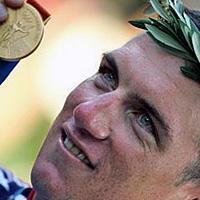
|
"In May, we will file an appeal that will be heard by the Court of Arbitration for Sport in Switzerland," Hamilton told Cyclingnews. "We will ask for an expedited hearing to try and resolve my case as quickly as possible, but we assume it will take a couple of months to schedule. We still feel very good about our case, and look forward to the appeal process moving ahead. We are encouraged by the fact that Christopher Campbell, who has been on more doping arbitration panels than perhaps any CAS arbitrator, agreed that this is a bad test that should not be used. We believe his dissent is the first written opinion by a CAS arbitrator finding that a specific doping test is invalid."
Responding to a number of questions put to him by Cyclingnews, Hamilton outlines the problems he had with the process. Apart from his dissatisfaction with what he said were inaccurate UCI measurements of his blood in the run-up to last year's Tour de France, he highlights several factors specific to his positive test which he feels weakens the case against him. Firstly, Hamilton cites the lack of a false positive study which, he says, makes the test unacceptable within the scientific community. He also criticises the lack of quantifiable criteria for a positive test, rejecting the 'I know it when I see it' approach, and blasts WADA for what he says was selective interpretations of peer-reviewed studies.
"The peer-review article and the comments of the peer-review committee determined that the test had a lower limit of detection or minimum threshold that should be applied before calling a sample positive for a blood transfusion," he explains. "All experts agreed that my sample was below that minimum threshold. But WADA and the Panel completely disregarded the minimum threshold. That was very disappointing."
Hamilton says that his Olympic 'A' sample was twice deemed negative, before being changed. He says that such a modification of a result is a violation of WADA code, as was the lack of anonymity in the case. 'All tests conducted for anti doping purposes are supposed to be anonymous. None of mine were. Ever. Which is not only a violation of the WADA code, but my right to privacy as well,' he states. Furthermore, he feels that statements proclaiming his guilt by WADA president Dick Pound call into question the whole impartiality of the process.
"I don't think it's fair for officials from any governing body to speak out about a case before athletes have had the chance to defend themselves," he says. "At the onset of my case I was told things would remain confidential until there was a conclusion. But before my B sample testing could begin news of my case was leaked to the press. What if my B samples came back negative all the way around? It seems that some folks are comfortable with trying cases through the media before the judicial process resolves them. I don't think this is appropriate. Nor am I comfortable with the concept of guilty until proven innocent."
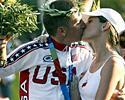
|
The UCI and WADA remain convinced that they have a case, that Hamilton is guilty and that he will serve a two year ban. Everything hinges on how the CAS appeal progresses; if it accepts the UCI/WADA/USADA view, his career is almost certainly over. But, if it goes the other way and they agree with Hamilton's arguments, he will be back racing this year. Seven months have passed since news of his positive tests, but the final outcome still remains to be decided.
Although we were able to contact Tyler, a face-to-face interview was impossible at the present time, and his responses came via email.
Cyclingnews: Firstly, can I get your reaction to the ruling? Are you surprised at the outcome, or had you any indications it would go this way?
Tyler Hamilton: Since I have not committed a doping offence, yes, I was completely surprised by the outcome. Everyone on my side felt we had put on a very good case. We were confident in the issues we raised. We highlighted the fact that my test results were inconsistent and we were thoughtfully critical of the test's validation and implementation. We felt these issues created considerable doubt about the way this test was developed, how it's being used, and how the results were being interpreted.
CN: What is your plan of action from here, and what are your chances?
TH: In May, we will file an appeal that will be heard by the Court of Arbitration for Sport in Switzerland. We will ask for an expedited hearing to try and resolve my case as quickly as possible, but we assume it will take a couple of months to schedule. We still feel very positive about our case, and look forward to the appeal process moving ahead. We are encouraged by the fact that Christopher Campbell, who has been on more doping arbitration panels than perhaps any CAS arbitrator, agreed that this is a bad test and should not be used. We believe his dissent is the first written opinion by a CAS arbitrator finding that a specific doping test is invalid.
CN: Can you outline your main problems/criticisms of the findings, and of the hearing itself?
TH: There were a number of issues missing from the ruling opinion, in our estimation.
Our biggest disappointment with the opinion was that it did not accept our recommendation that every test being used for anti doping purposes must absolutely have a false positive study to support it. Science requires such a false positive study.
Researchers associated with the test have stated publicly that the test is "100% accurate, and there are no false positives". No test is 100% accurate, and without doing a false positive analysis, they cannot say there are no false positives. One of USADA's witnesses testified during the hearing that they didn't need to do a false positive study because he "just knows the chances of false positives are low". This assumption would not be acceptable in the scientific community. If they did no false positive study, then how can they say the false positive rate is low?
We also argued that his test lacks quantifiable criteria to determine results. Experts on both sides stated that a quantifiable component could be added. But the decision did not mandate that quantifiable criteria be added to the test, and that was very disappointing.
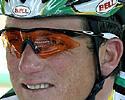
|
In addition, the WADA approved "visual criteria" for determining the results of this test equates to an "I know it when I see it" evaluation. This standard has been deemed "unacceptable" in other doping cases when quantifiable criteria could be used to back up the visual interpretation. Ultimately, the quantifiable criteria determined the results in those cases. The opinion in my case contradicts those rulings.
Finally, WADA, while on the one hand relying on the "peer-reviewed" study for this new test in arguing that it is scientifically reliable, disregarded and contradicted other parts of that peer-review study. The peer-review article and the comments of the peer-review committee determined that the test had a lower limit of detection or minimum threshold that should be applied before calling a sample positive for a blood transfusion. All experts agreed that my sample was below that minimum threshold. But WADA and the Panel completely disregarded the minimum threshold. That was very disappointing.
Each of our arguments were dismissed by two of the arbitrators, but the majority decision provides little explanation for why these arguments were rejected. At the very minimum, we absolutely expected to see a series of recommendations made regarding how the test could be improved, or at least a comprehensive analysis of all of the arguments that were made. The hearing lasted four days, and the Panel had six weeks to write the decision.
CN: Have other blood tests confirmed mixed red blood cell populations, or just the Olympic/Vuelta tests?
TH: I want to clarify that my Olympic test was negative. In fact, two tests were run on my A sample in Athens and both were declared negative by the lab. As Christopher Campbell so clearly pointed out in his dissenting opinion, the very people who developed the test made the re-designation of my Athens sample to positive. There are important issues to raise here - first, according to WADA code, once a sample is "declared" it can't be changed. But mine was. Second, the group that changed the declaration had a vested interest in the outcome of the results since they had a hand in developing the test. And finally, this group also knew the test results were mine. All tests conducted for anti doping purposes are supposed to be anonymous. None of mine were. Ever. Which is not only a violation of the WADA code, but my right to privacy as well.
We were never provided the standard operating procedure (SOP) for this test, although we requested it many times. Medical experts at MIT took the Nelson research and my test results, and backed out what they believed to be the test protocol. By the time we had given up on waiting for the SOP, and recreated the procedure on our own, it was December. So, trying to duplicate or get to the bottom of those results has been a difficult road. To date, we have not been able to explain the UCI's findings. But research is ongoing.
CN: What made you believe that you could have been a chimera or had a vanishing twin? Does the fact that Santi Perez, a Phonak teammate, failed the same test make your case difficult, re arguing the chimera defense?
TH: I need to make something very clear; the theories you mention above were examples we provided while making our case that a false positive study should have been conducted before this test was implemented.
We also argued that twins would have been a good population to study. Mr Campbell also noted in his dissent that women who have given birth should have been considered. It is well documented in the medical community that there are people in the world who have cells from others in their bodies or more than one DNA signature. To simply say that you think the chances of false positives are "rare" and not go on to prove that theory is inconsistent with the scientific community's self imposed standard for validation.

|
I can never prove whether or not I had a twin in utero. No one can. And USADA agreed that it is impossible to prove that someone is chimeric. It was difficult to understand how USADA could argue, and the Panel could accept, that it was somehow my burden to prove something (chimerism) that USADA had agreed was impossible to prove. These phenomena are well documented. Enough so that the researchers who developed the homologous blood transfusion test should have taken them into account when considering false positives. Santi Perez testing positive had no bearing on this argument.
The Santi Perez situation is completely confusing to me. I'm told he provided a number of blood samples during the Vuelta but never tested positive there. Not until he was called in for an out of competition test in October, at the start of his off-season, did he test positive. I know he was expecting a judicial hearing in May or June. However, his case was expedited to the point that he was not even able to be present for his hearing. This raises a concern over whether he was given the appropriate opportunity to defend himself.
CN: Were you surprised that the LA Times got access to the data about your earlier blood readings? How do you respond to that data, which suggested your blood values were very close to threshold levels set by the UCI?
TH: We provided access to the LA Times. I am trying to be as candid as possible because I have nothing to hide. Unfortunately, it would probably take a book to explain the whole case, and in a newspaper article, not all of the issues will be completely addressed.
Hematocrit levels can vary for a number of reasons. For example: machine calibration or the way samples are drawn can influence the readings. So can dehydration, fatigue or illness. When you are putting your body through as much as an endurance athlete does it's not unusual to see some fluctuation in these results. Training at altitude or using altitude machines also plays a role in influencing levels. So there's no hard and fast number for anyone.
I was the returning champion at Liege and Romandie, so for obvious reasons I expected, and was tested in both places. Our team complained about the Romandie numbers because we believed they were inaccurate. This is because some riders on the team competed at both races. Those who did registered on average, 4 point gains when tested 4 days later at Romandie. In addition, the team's own measurements were much lower. So we complained to the UCI.
At the Phonak hearing in front of CAS, the UCI testified that they had received multiple complaints from a number of teams in 2004 disputing the accuracy of hematocrit readings. So this was not a unique or unusual issue.
CN: Can you outline any problems you have with the UCI tests, re how they were being done?
TH: I think the approval status of "comfortable satisfaction" established by WADA opens the door for a number of problems. For starters, it paves the way for tests being approved that should still be in development.
And while WADA or any governing body like the UCI implementing the WADA code only has to be "comfortably satisfied" with the results of a test - the athlete is put to the task of proving their unequivocal innocence.
In my case, it was not enough to cast doubt with sound arguments from medical experts from some of the best universities in the world. The way the final opinion read, my only hope of vindicating myself was proving beyond a shadow of a doubt that I am chimeric, a task that USADA says is impossible.
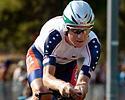
|
I think it's fair to say cyclists deserve better. I think a union would really help. It's my opinion that an athlete's union would never have approved the homologous blood transfusion test without a false positive study as part of its validation.
In a recent interview, Dick Pound criticised my point of view on this by asking: "What is he talking about? His right to cheat or the rights of others not to be cheated? That's a gross misrepresentation of my point. I am more convinced than ever, that athletes of all sports need to have unions to insure they are being treated fairly. Fairness in sport, as a practice, should not be limited to the playing field. It must also encompass the general health, safety and wellbeing of the athletes. This includes the standards by which all athletes are tested by the anti doping community.
I would think that WADA would be interested in having an anti-doping system that the athletes believe is fair. But their attitude seems to be that they simply don't care what the athletes think about them. WADA and USADA do not have a monopoly on protecting the rights of clean athletes, anymore than criminal prosecutors have a monopoly on keeping our streets safe. Athlete lawyers who regularly defend athletes in doping cases are protecting the rights of clean athletes by trying to make sure that the rules are fair, the tests are accurate, and that innocent athletes do not have their careers and reputations destroyed. Unfortunately, this select group of attorneys is not included in the rulemaking process or in the test validation process, and the rules are therefore very skewed against the athletes.
CN: Have you established why your reticulocyte count was so low before the Tour of Romandie?
TH: No. We had one of the foremost medical experts in anti-doping research examine ten years of my health scores and blood tests. He testified that the score was so low it was not to be believed. Of the thousands of blood samples he's examined in his career, on athletes known to be doped for research purposes, he has never seen a number as low as mine except for one occasion when the sample was known to be mishandled during transport. It's worth noting that the Tour of Romandie was not a key objective of mine in 2004. I only had two solid goals for the season - to do well at the Tour de France and the Olympics. During my key racing period - which spanned from July to September, all of my values were absolutely normal and consistent with my medical history.
CN: You mentioned that the UCI hematocrit test was inaccurate before the Tour. What was the reading arrived at by the team's centrifuge?
TH: The night before my Tour de France medical checkup the team measured my hematocrit at 43. The next morning the UCI measured my hematocrit at 38. So we noted to the medical staff there that we thought the reading was low. If anything, you expect to be a little dehydrated in the morning, and for your hematocrit reading to be slightly higher. This reading proves that hematocrit scores can be off going in both directions. Sometimes they can be high and sometime they can be low. This is why teams have their own hematocrit machines and monitor values independently.
CN: On your web page you talk about an extortionist who appeared to have advance knowledge of your positive test and that of Santi Perez. Was this coincidence, or do you feel that something more sinister was going on within the testing/administrative bodies?
TH: We are still trying to find out more information about this situation. It is surprising to me that the IOC, WADA and the UCI have not had an interest in investigating this case. News reports about this situation were published in Switzerland back in December. The extortionist, who was arrested and jailed in early November, claims he was only "guessing" that Santi and I would test positive and defended himself by saying he was only playing a joke on the general manager of the team (Phonak). But his guessing game was pretty accurate and it caused an awful lot of stress for people he was targeting. It is hard to accept that he did not have some inside access.
CN: Dick Pound and the UCI both commented extensively on your case before a verdict was reached. What are your feelings on this? Do you feel you had a fair hearing as a result?
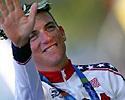
|
TH: I don't think it's fair for officials from any governing body to speak out about a case before athletes have had the chance to defend themselves. At the onset of my case I was told things would remain confidential until there was a conclusion. But before my B sample testing could begin news of my case was leaked to the press. What if my B samples came back negative all the way around? It seems that some folks are comfortable with trying cases through the media before the judicial process resolves them. I don't think this is appropriate. Nor am I comfortable with the concept of guilty until proven innocent.
CN: Have you ever used any banned substances or methods?
TH: No.
CN: Finally, what would you say to those following the sport, with regard to your case?
TH: First and foremost this case is not just about me. My fight is really on behalf of all athletes who stand to be subjected to tests that may not be ready for use. I want a better standard for every competitor of every sport. So I ask that people have patience. Standing up like I have and speaking openly about my case takes a lot of fortitude. But a large part of my motivation comes from not wanting anyone else to have to endure the kind of experience I have over the last seven months.
And I would also ask people to read the full opinion in my case, including the dissent written by Christopher Campbell. I am faced with the challenge of telling a very complicated story that incorporates a number of issues. But I will keep doing my best to answer questions people have. As I have said from the beginning, I have nothing to hide.
Related stories
- September 21, 2004 - News: Hamilton fails blood tests
- Spetember 22, 2004 - News: Hamilton and Phonak protest innocence
- September 22, 2004 - News: Hamilton suspended by Phonak
- September 23, 2004 - News: Phonak claims one B test negative; Tyler Hamilton's statement in full
- September 23, 2004 - In the blood: How the new blood doping test works
- September 23, 2004 - News: Hamilton's Olympic B test dropped
- September 29, 2004 - News: Russia to appeal against Hamilton decision
- October 1, 2004 - News: Pound weighs in to Hamilton controversy
- October 21, 2004 - News: Russians appeal Hamilton's gold
- October 22, 2004 - News: Hamilton vows to clear his name,
- November 8, 2004 - News: How Tyler's medal was saved; WADA's Independent Observers Report raises questions
- November 18, 2004 - News analysis: WADA code opens door to Hamilton appeal
- November 25, 2004 - News: Hamilton speaks out
- December 1, 2004 - News: Hamilton confirms sacking; UCI explains
- February 4, 2005 - News: Hamilton hearing date set
- February 28, 2005 - News: Hamilton hearing starts
- March 11, 2005 - News: Hamilton optimistic, but proceedings kept open
- March 14, 2005 - News: A longer wait for Hamilton
- April 13, 2005 - News: Hamilton awaits
- April 17, 2005 - News: Hamilton decision expected on Monday
- April 18, 2005 - News: Hamilton's defence: The vanishing twin?
- April 19, 2005 - News: Hamilton suspended for two years
- April 19, 2005 - Hamilton's defence: In his own words
- April 19, 2005 - The Hamilton decision: Is he guilty and is the science perfect?
- April 22, 2005 - News: Hamilton: "The fight will continue"
- April 28, 2005 - An interview with Tyler Hamilton: Hamilton reacts to doping ban
- May 18, 2005 - News: Hamilton appeal set for June
- June 3, 2005 - News: Hamilton appeal is go
- June 16, 2005 - News: Hamilton appeal hearing delayed
